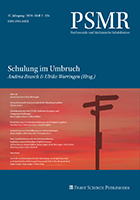Drawing on examples of famous cases of white-collar crime from the literature and from movies, Friedemann Pfäfflin and Franziska Lamott "demonstrated that the diagnostic criteria for psychopathy according to Hares concept as well as the criteria for the antisocial personality disorder according to the DSM-IV and the dissocial personality disorder according to the ICD-10 are often met. While offenders with the same personality traits coming from a lower class are at risk of being confronted with a psychiatric expert in court and while they may end up in court ordered forensic psychiatric detention, perpetrators from the upper class are often admired, this social difference challenges the objectivity of the diagnostic criteria."
The authors report: "Whereas in the case of the lower classes social deprivation and material want are declared to be jointly responsible for the appearance of the dissocial behaviour, in the case of upper classes, in white-collar crime, that is in situations with a more affluent basis and with access to the latitude allowed by capital, these characteristics may be quiet functional. White-collar crime shows that beyond individual pathology, social, organizational and institutional structures promote the acting out of behaviour patterns based exclusively upon financial gain and narcissistic success. Consequently, the external conditions reinforce the inner character structures, and thus also their ruthless assertion of interest based upon profit maximization."
Forensische Psychiatrie und Psychotherapie 2010-3






















